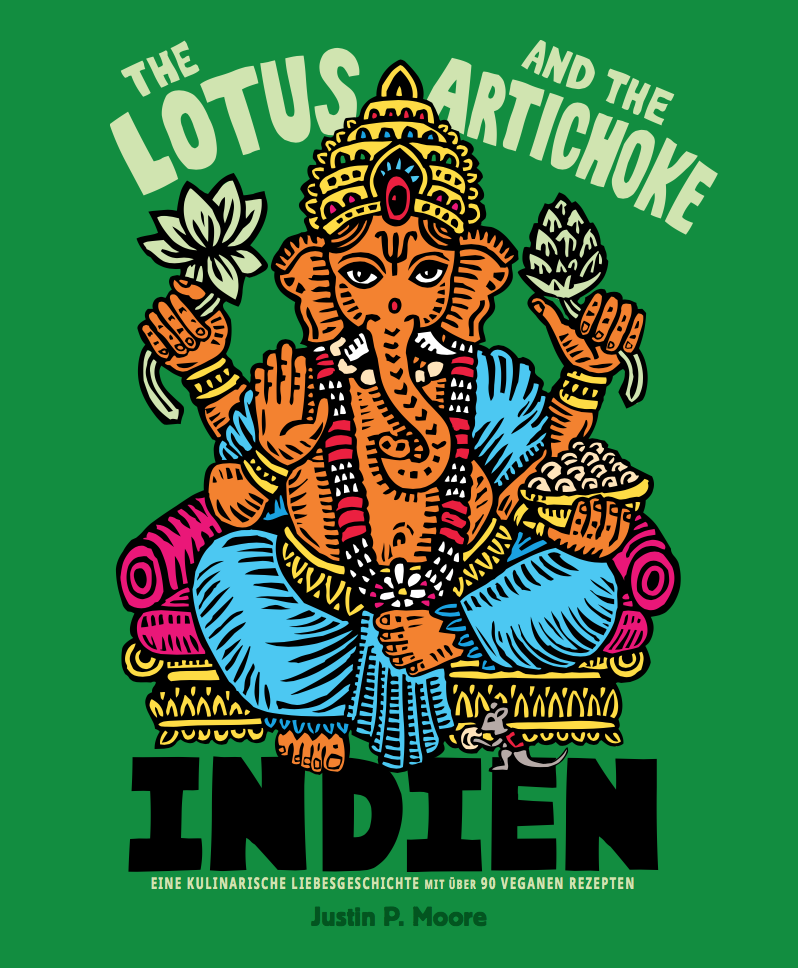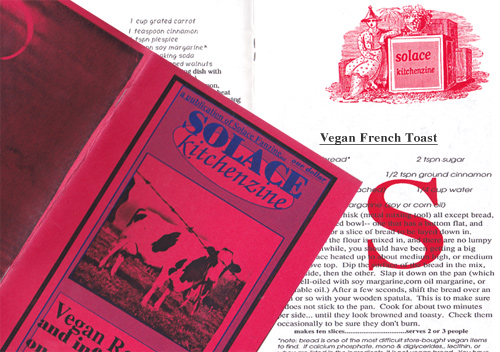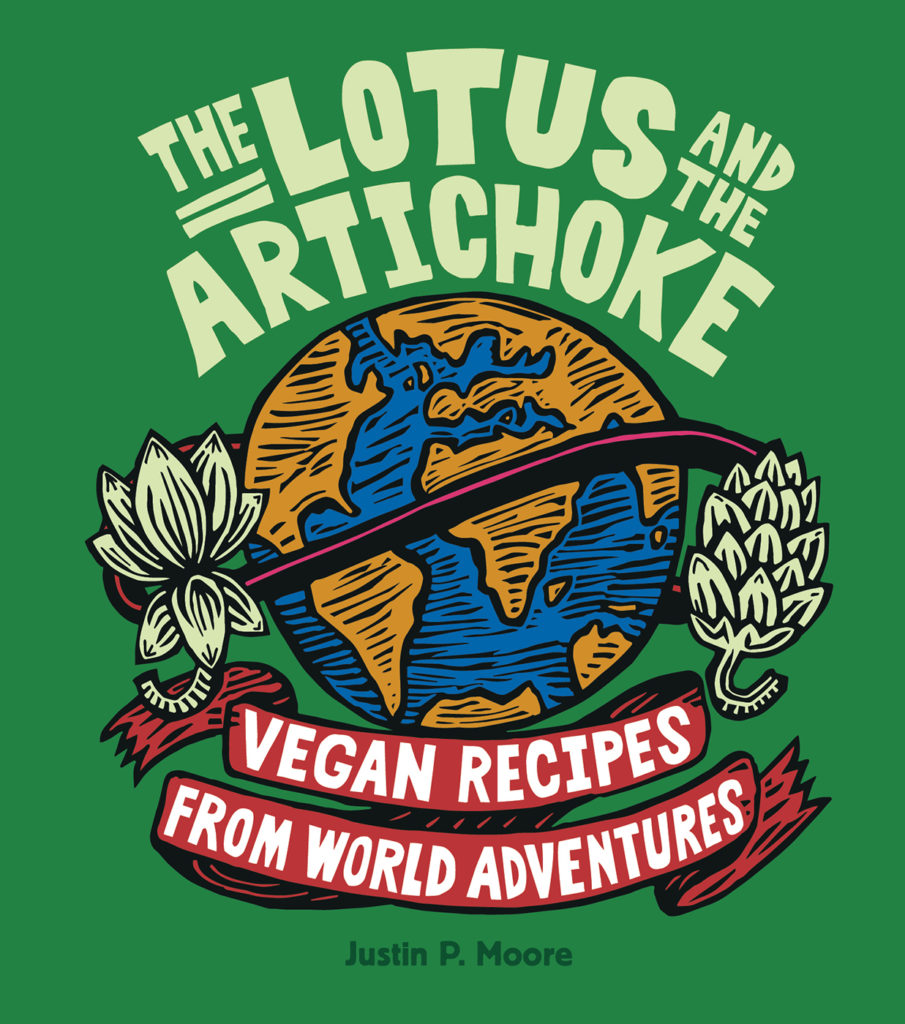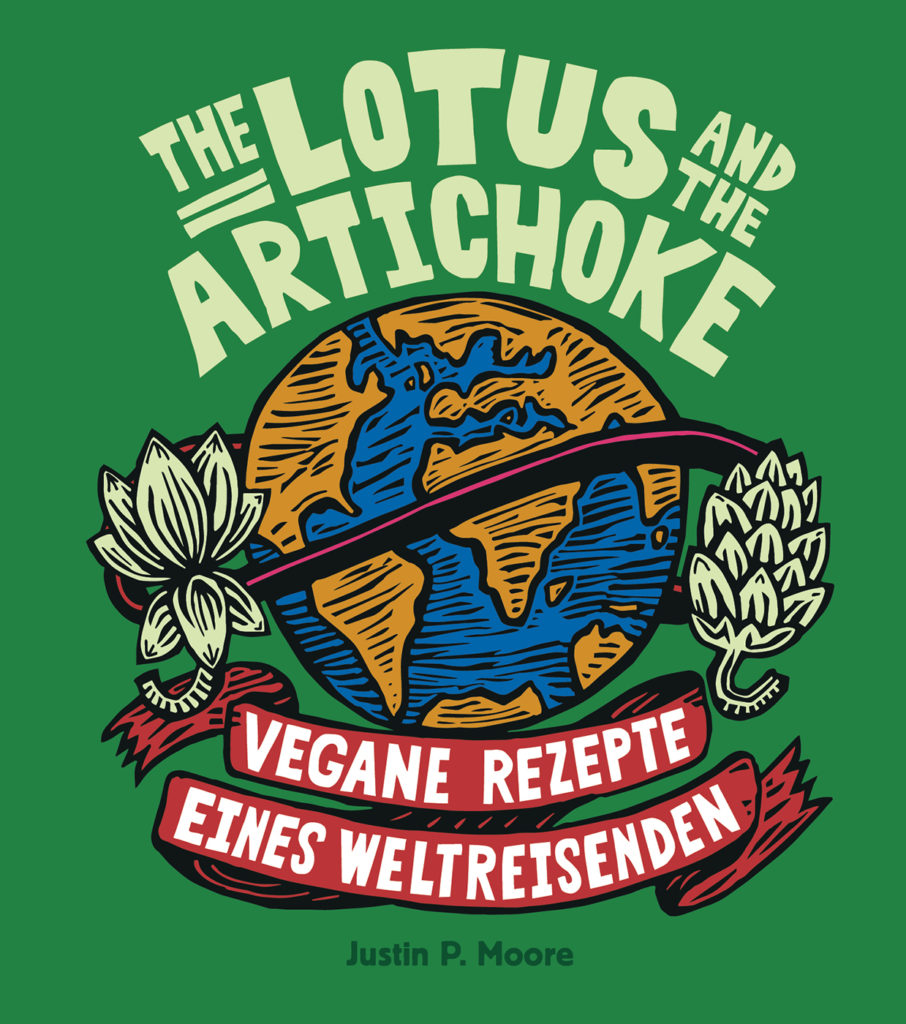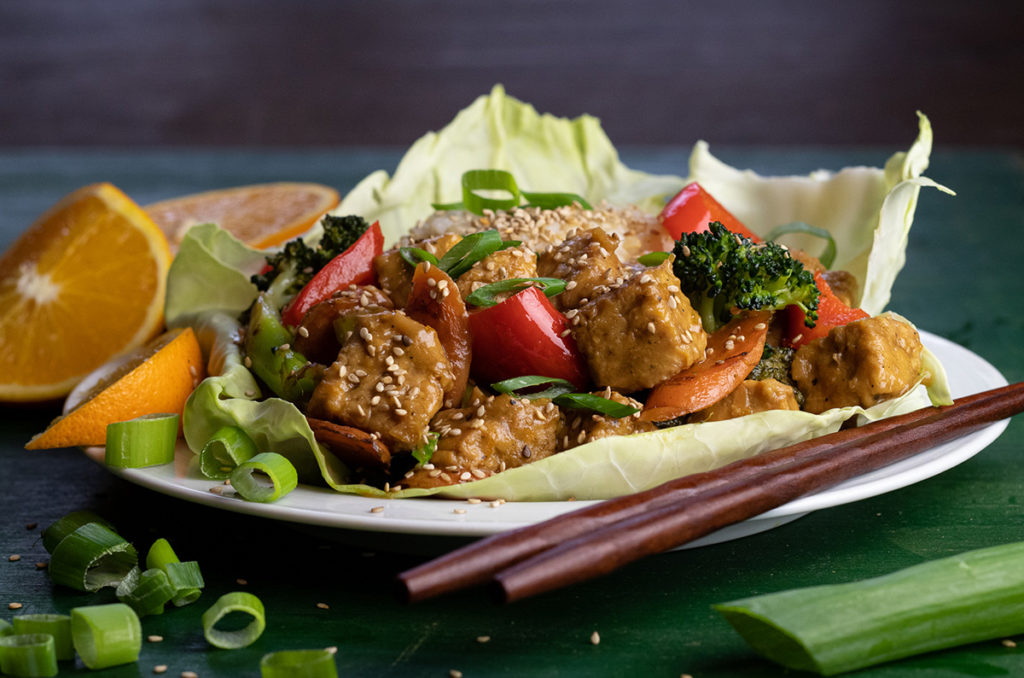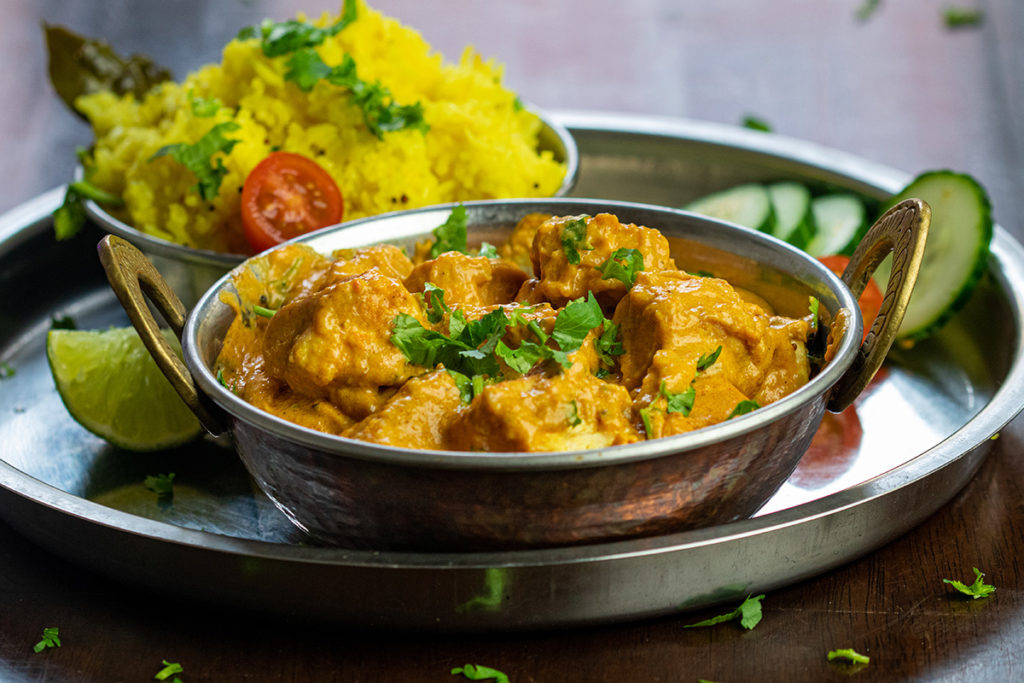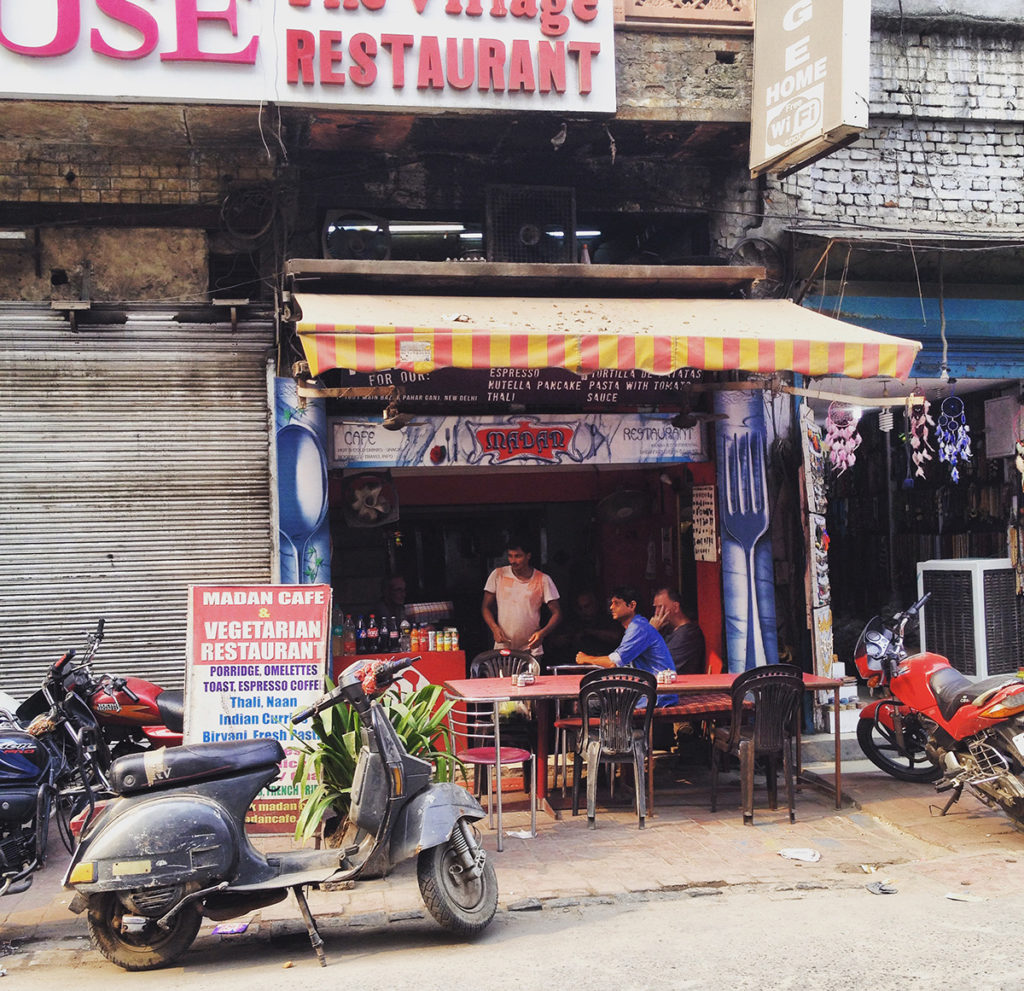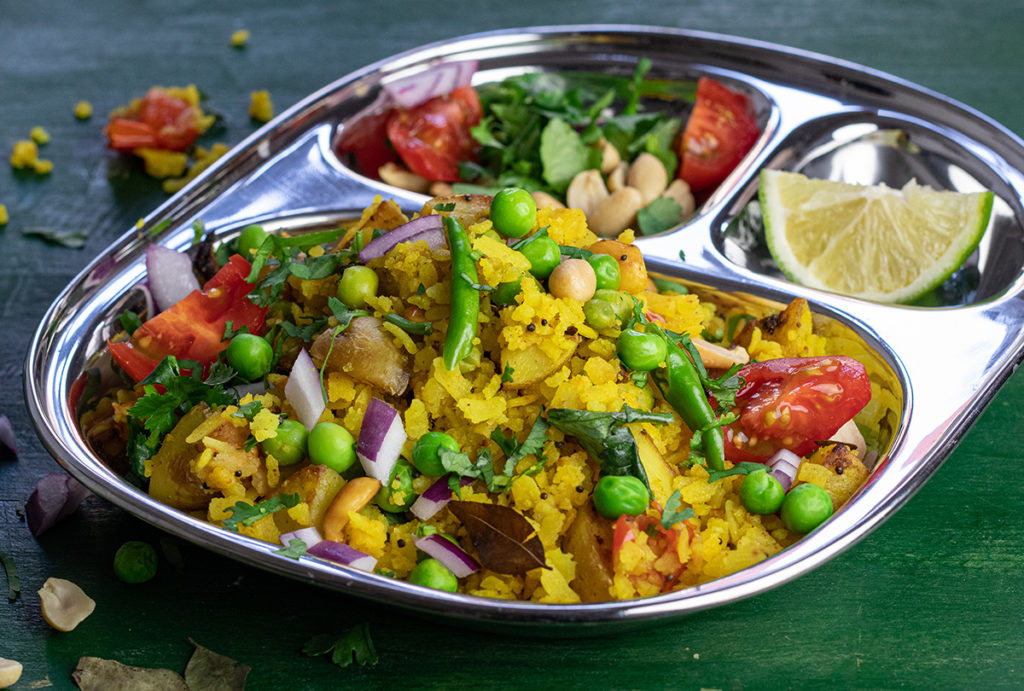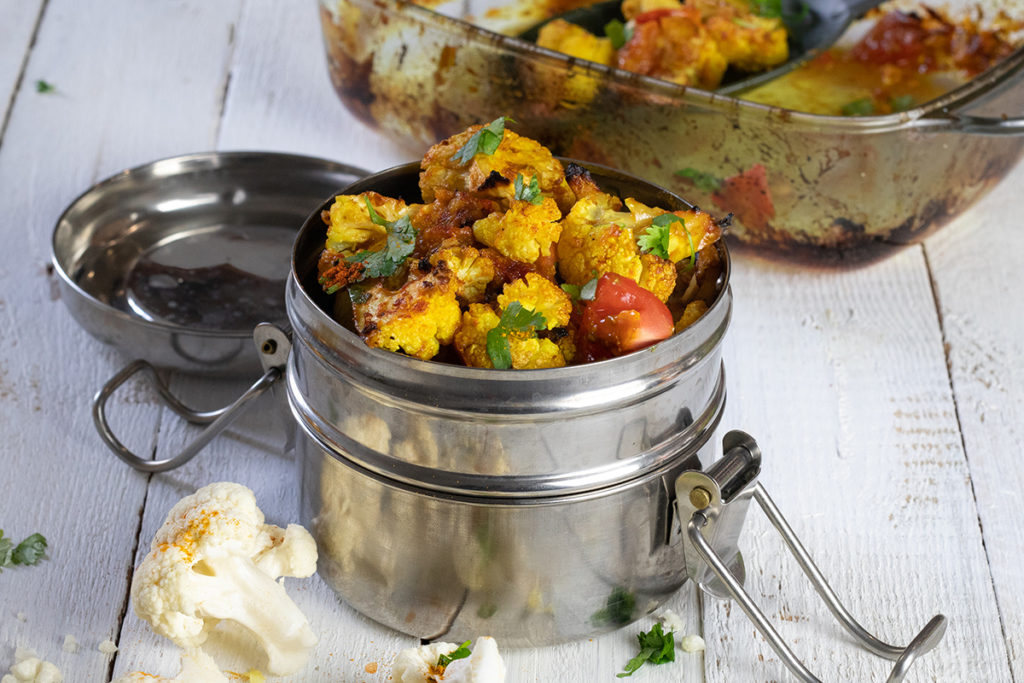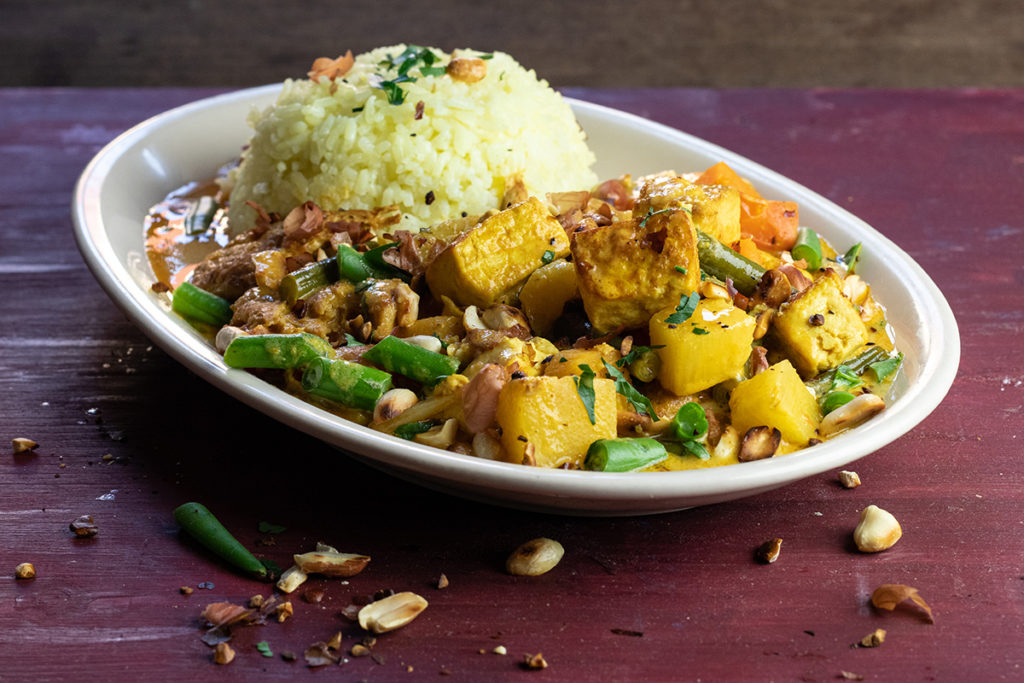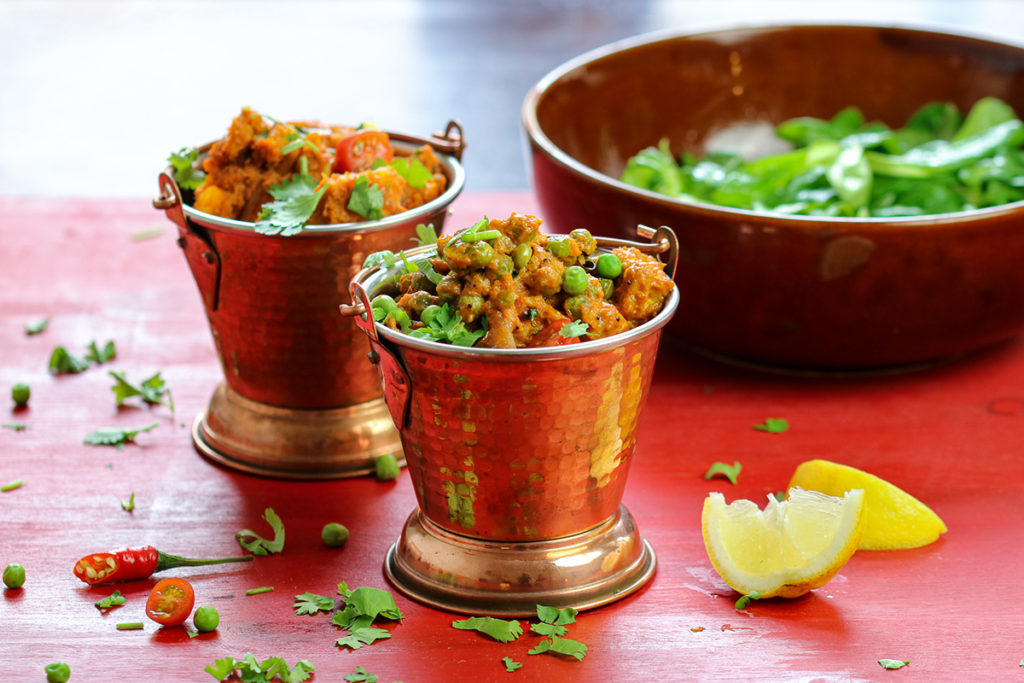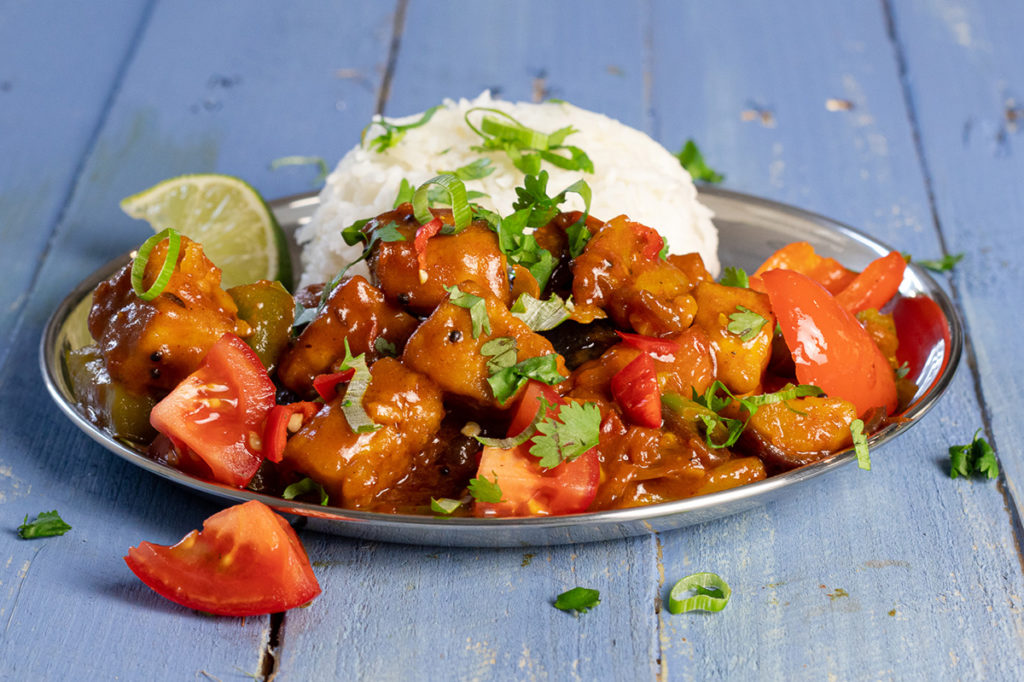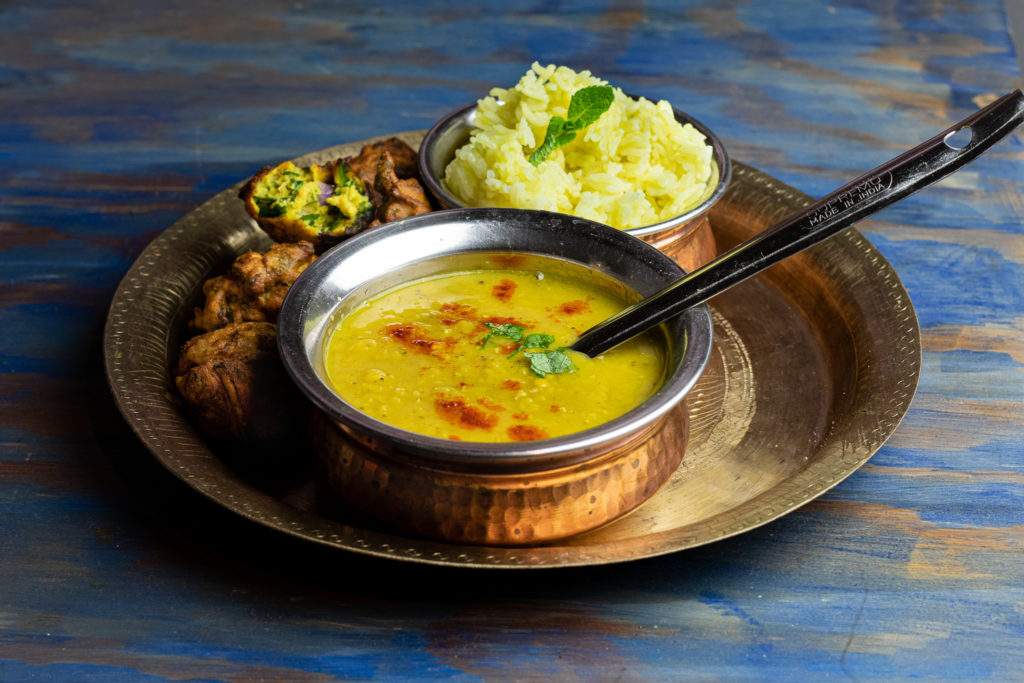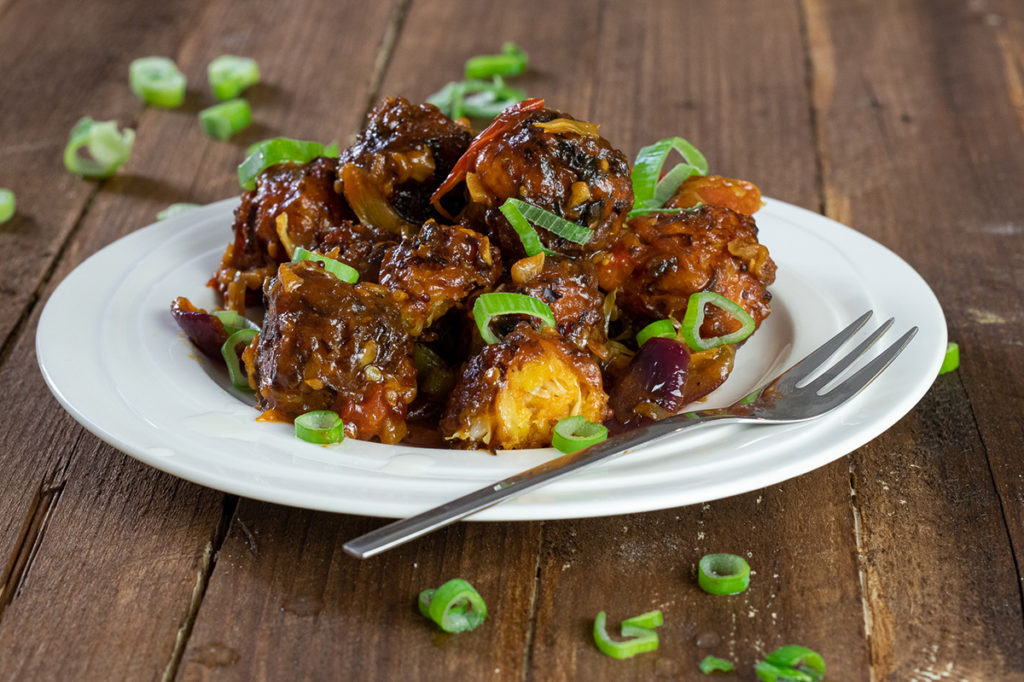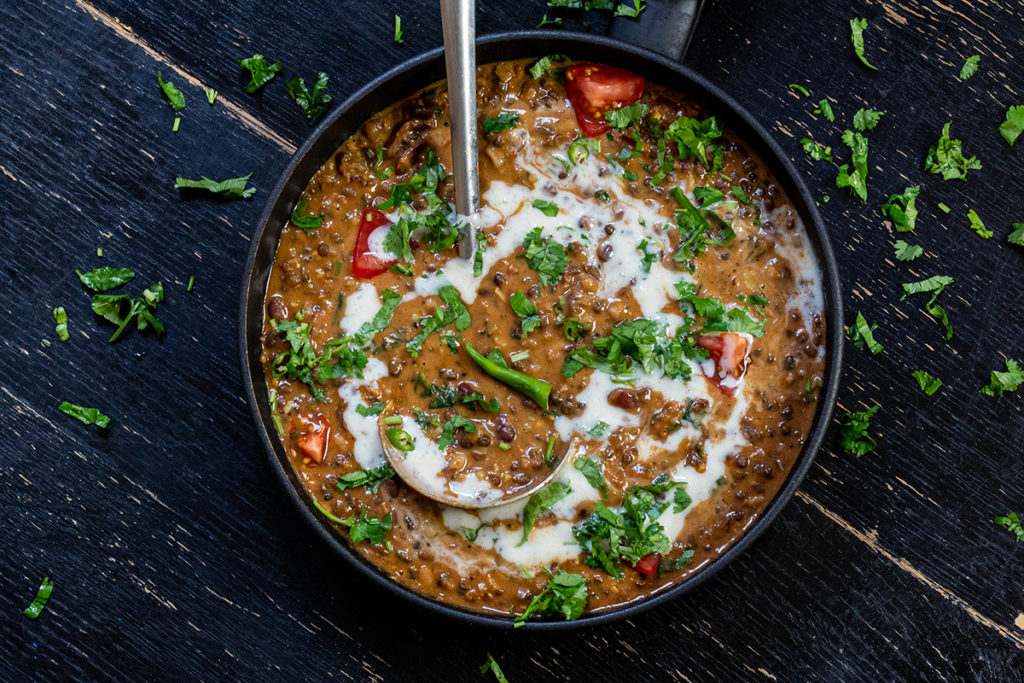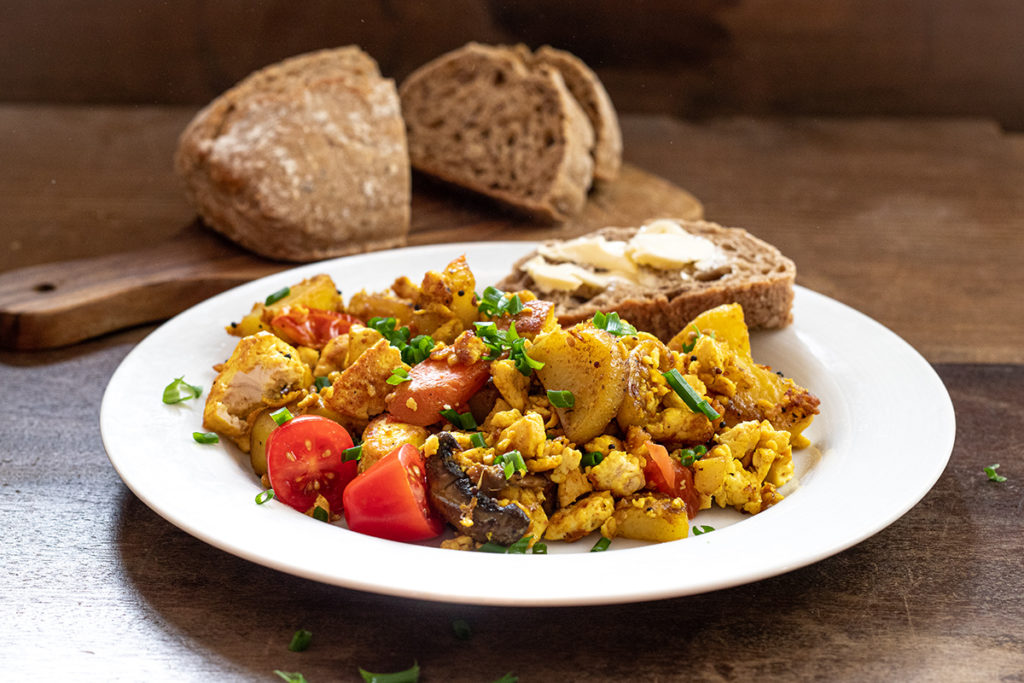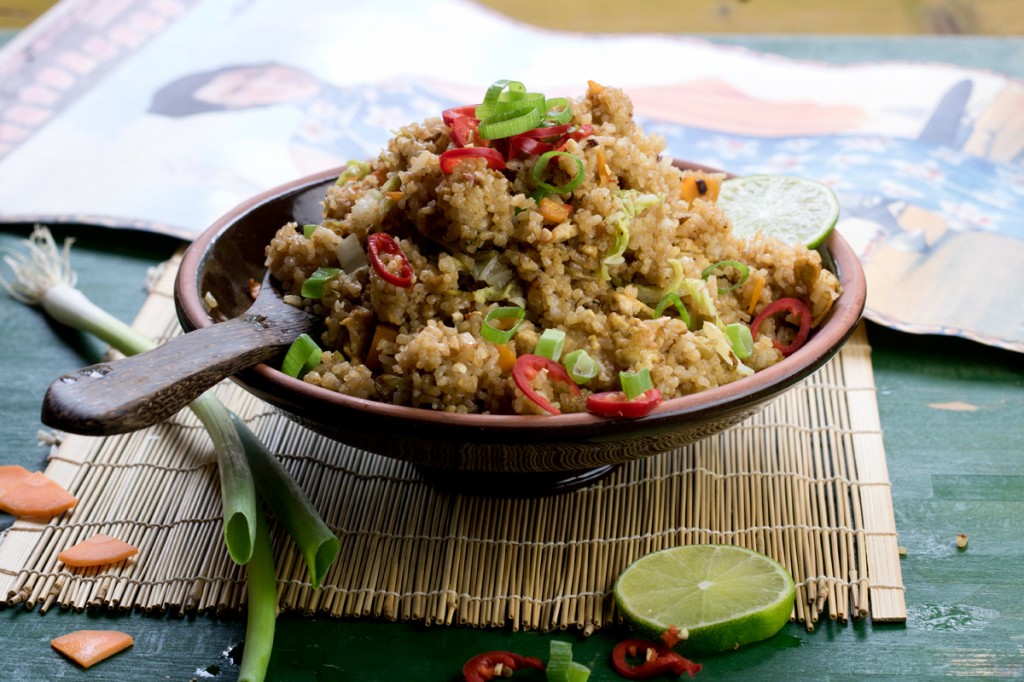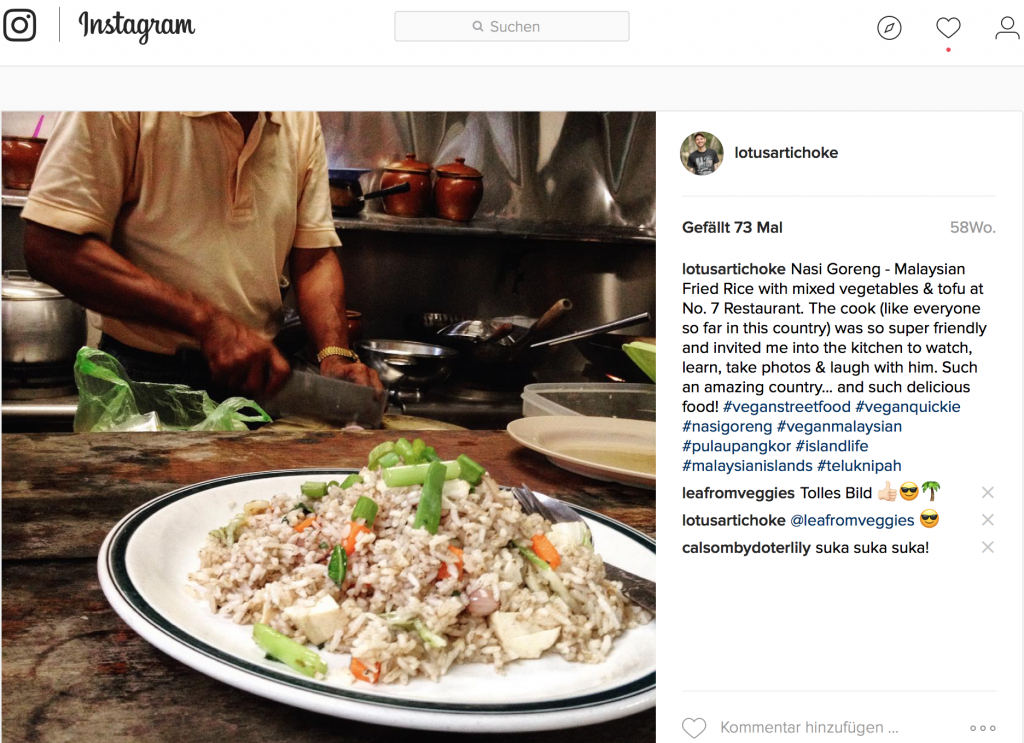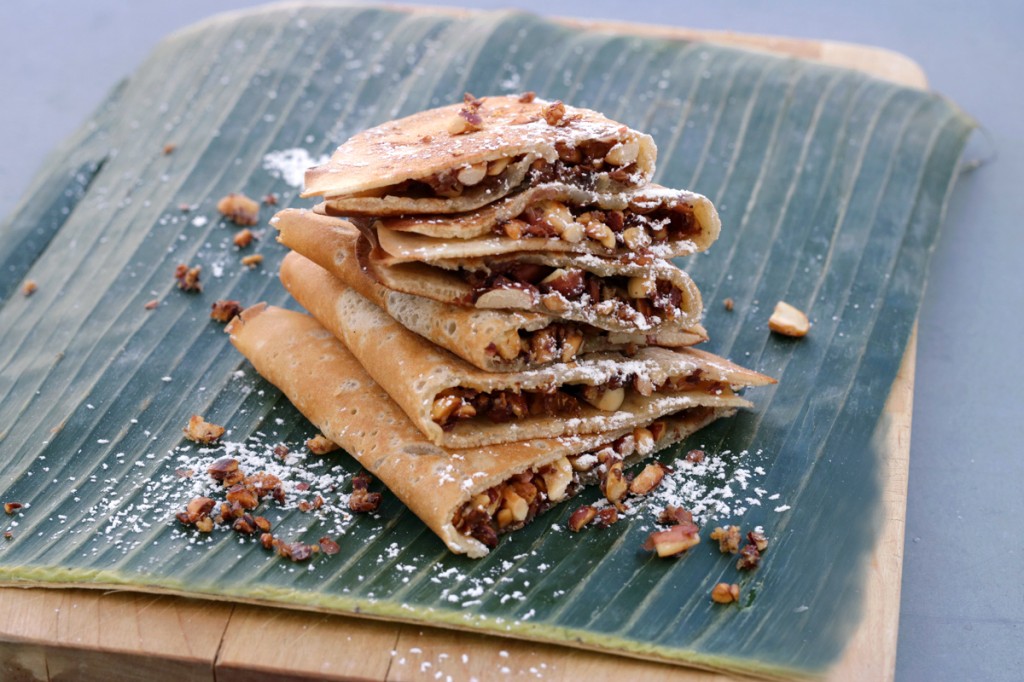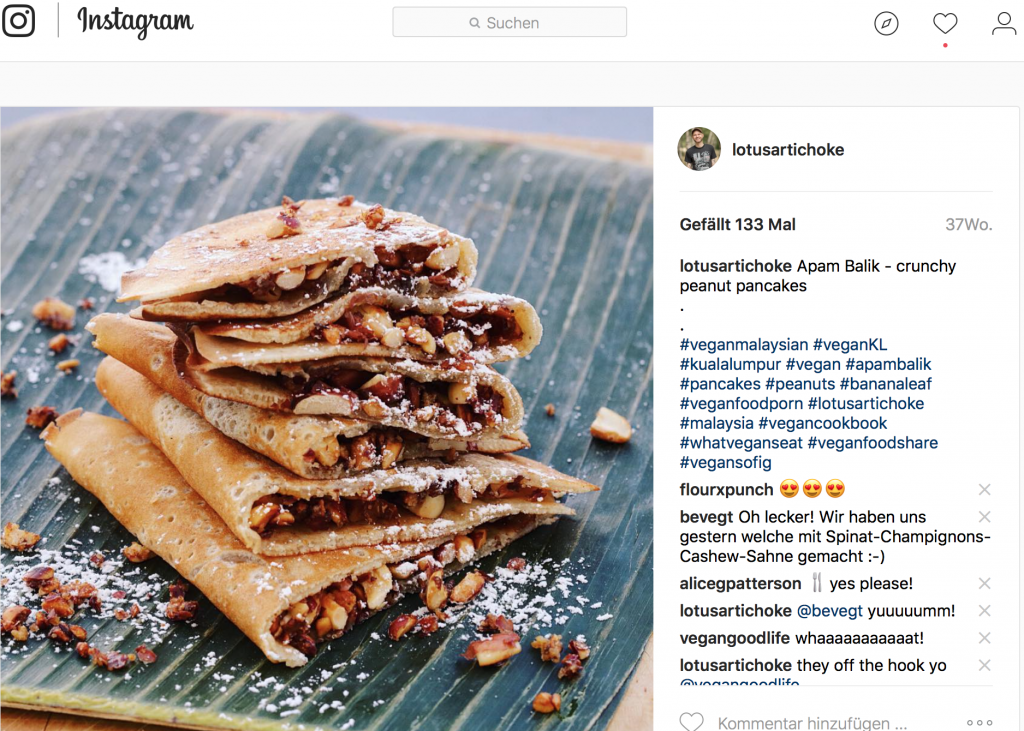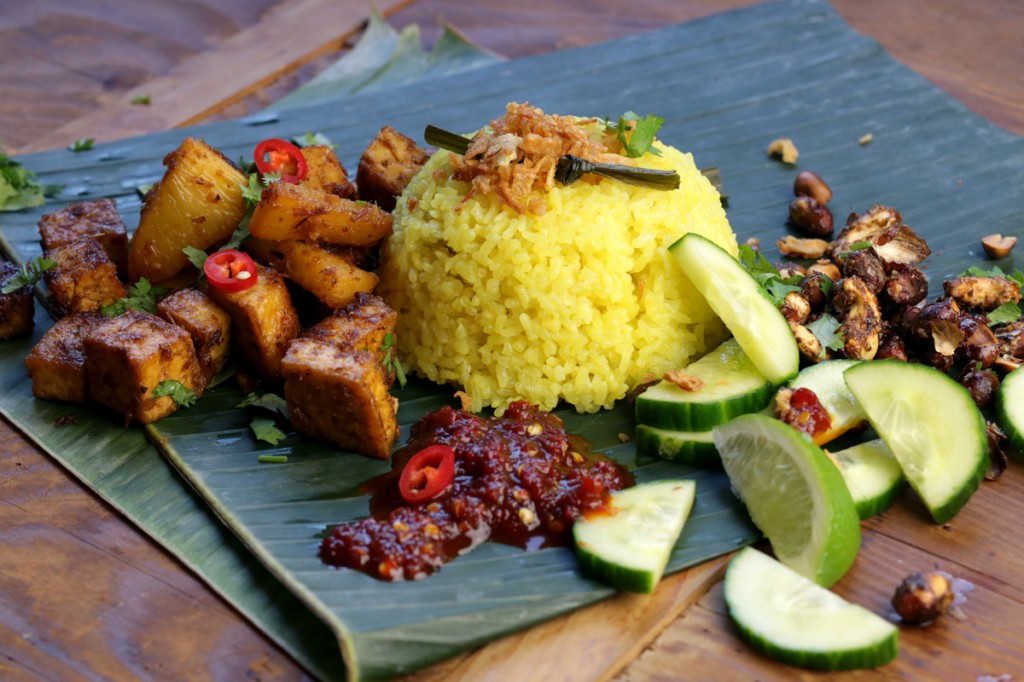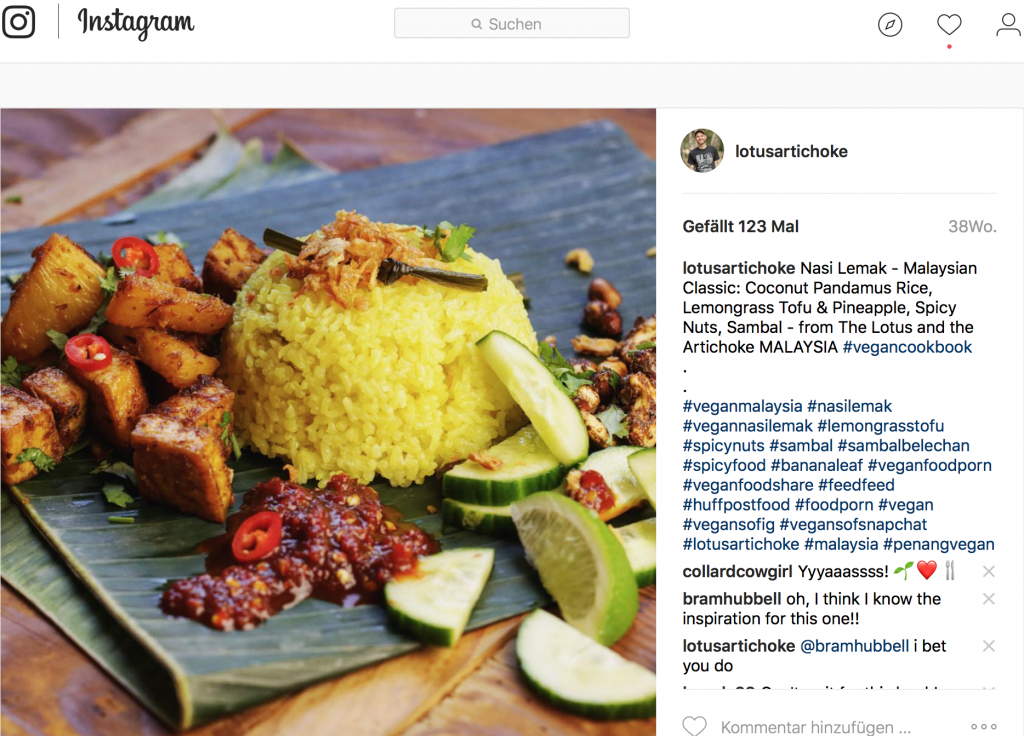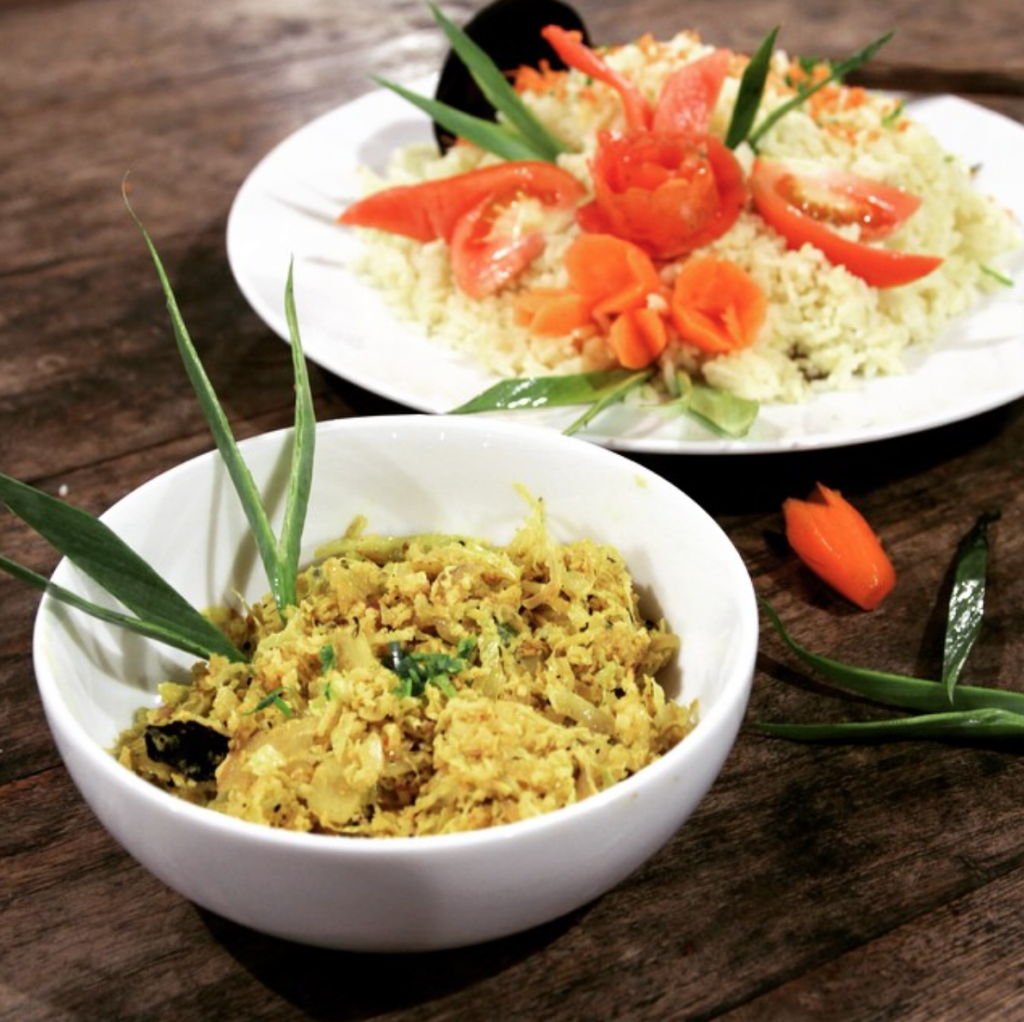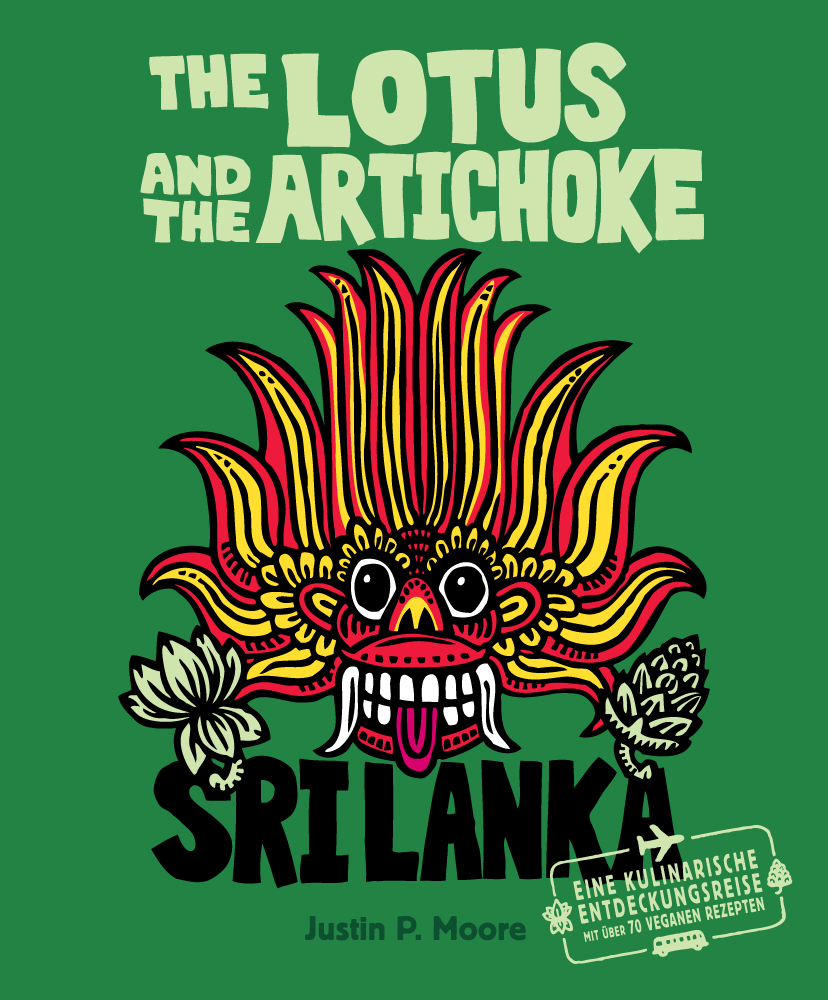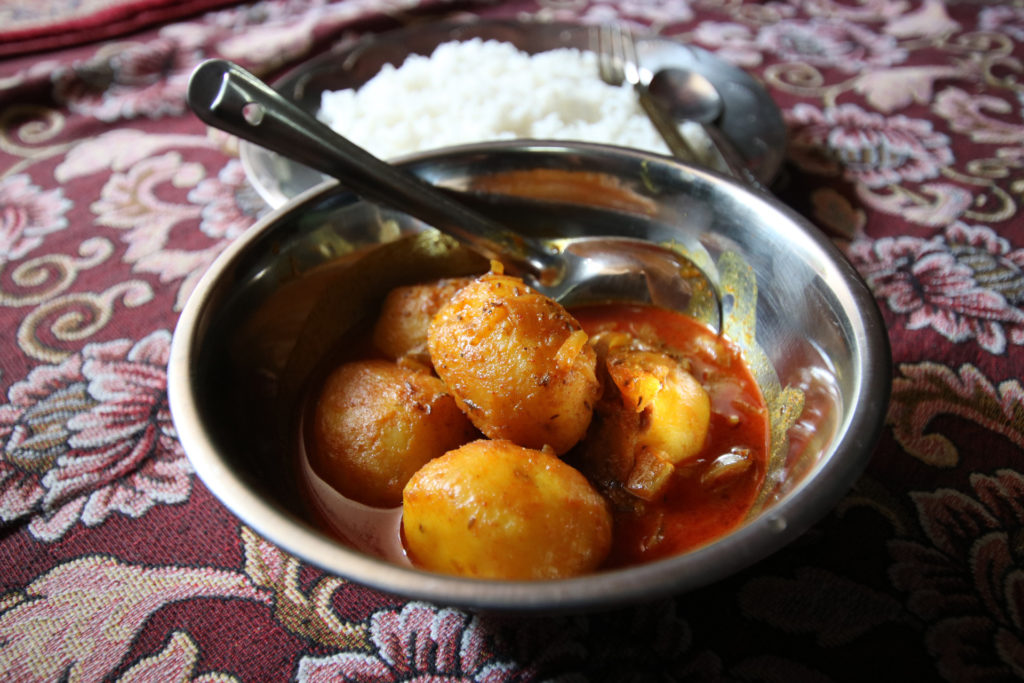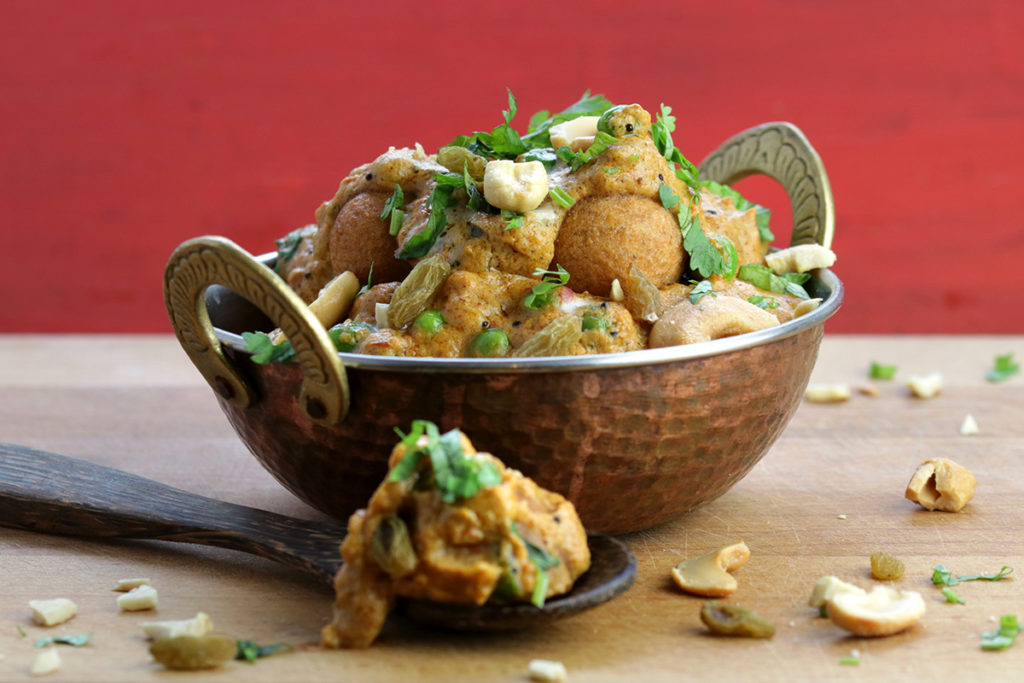
Malai Kofta
North Indian potato dumplings in creamy tomato curry
serves 3 to 4 / time 45 min
recipe from The Lotus and the Artichoke – INDIA
(Rezept auf Deutsch unten)
- 3/4 cup (90 g) cashews
- 1 1/4 cup (300 ml) water
- 2 Tbs lemon juice
- 2 medium (250 g) potatoes
- 1/3 cup (30 g) chickpea flour (besan)
- 3 Tbs (20 g) bread crumbs
- 2 Tbs corn starch
- 3/4 tsp cumin ground
- 1/2 tsp Garam Masala (page 32, INDIA cookbook)
- 1/2 tsp sea salt
- vegetable oil for frying
- 2 large (250 g) tomatoes chopped
- 1 1/4 cup (300 ml) water
- 1 small (70 g) red onion chopped
- 2 cloves garlic finely chopped
- 1 in (3 cm) fresh ginger finely chopped
- 2 Tbs vegetable oil
- 1 tsp mustard seeds
- 1 tsp cumin ground
- 1 tsp coriander ground
- 1/2 tsp Garam Masala (page 32, INDIA cookbook)
- 1/2 tsp red chili powder or paprika ground
- 1/4 tsp asafoetida (hing) powder
- 2 bay leaves
- 1 large cinnamon stick
- or 1/4 tsp cinnamon ground
- 1 black cardamom pod
- 3/4 tsp turmeric ground
- 3/4 tsp sea salt
- 1 tsp sugar or agave syrup
- 1/2 cup (65 g) green peas
- 3 Tbs golden raisins
- fresh coriander leaves chopped, for garnish
- Soak cashews in hot water 20 min. Drain and discard water. Blend soaked cashews with 1 1/4 cup (300 ml) fresh water and lemon juice until smooth, 60–90 sec. Transfer to bowl. Set aside.
- Cover potatoes with water in a medium pot. Bring to boil. Cook until soft, 20–25 min. Rinse in cold water. Remove, discard peels. Mash potatoes in a large bowl. Add 2 Tbs blended cashew cream, chickpea flour, bread crumbs, corn starch, ground cumin, garam masala, and salt. Mix well.
- Heat oil about 2 in (5 cm) deep in small pot on medium high heat. Oil is hot enough when a small piece of batter sizzles and comes to surface immediately.
- Wet hands and form walnut-sized balls from the batter. Carefully add 4 to 6 balls to hot oil. Fry until golden brown, turning often, 3–5 min. If balls turn brown immediately or oil is smoking, reduce heat. If they don’t sizzle and darken in 2 min, increase heat slightly. Using a slotted spoon, drain and transfer fried dumplings to a plate. Continue for all balls.
- Blend chopped tomatoes and 1 1/4 cup (300 ml) water until mostly smooth.
- Heat 2 Tbs oil in a large pot or wok on medium heat. Add mustard seeds. After they start to
pop (20–30 sec), add chopped onion, garlic, ginger, ground cumin, coriander, garam masala, red chili powder (or paprika), bay leaves, cinnamon, and cardamom. Fry until onions soften,
stirring constantly, 3–5 min. - Add blended tomatoes. Bring to boil. Simmer until sauce darkens, stirring regularly, 10–12 min.
- Stir in blended cashew cream, turmeric, salt, and sugar (or agave syrup). Continue to simmer, stirring regularly, until sauce thickens and oil begins to separate from sauce another 7–10 min.
- Stir in fried dumplings, peas, and raisins. Simmer on medium low, partially covered, stirring occasionally, 3–5 min. Remove from heat.
- Garnish with chopped coriander leaves and serve with rice, roti, or naan.
Malai Kofta
nordindische Kartoffelbällchen in cremigem Tomaten-Curry
3 bis 4 Portionen / Dauer 45 Min.
Rezept aus The Lotus and the Artichoke – INDIEN
- 3/4 Tasse (90 g) Cashewkerne
- 1 1/4 Tasse (300 ml) Wasser
- 2 EL Zitronensaft
- 2 mittelgroße (250 g) Kartoffeln
- 1/3 Tasse (30 g) Kichererbsenmehl (Besan)
- 3 EL (20 g) Semmelbrösel
- 2 EL Speisestärke
- 3/4 TL Kreuzkümmel gemahlen
- 1/2 TL Garam Masala (Seite 32)
- 1/2 TL Meersalz
- Pflanzenöl zum Frittieren
- 2 große (250 g) Tomaten gehackt
- 1 1/4 Tasse (300 ml) Wasser
- 1 kleine (70 g) rote Zwiebel gehackt
- 2 Knoblauchzehen fein gehackt
- 2 cm frischer Ingwer fein gehackt
- 2 EL Pflanzenöl
- 1 TL Senfsamen
- 1 TL Kreuzkümmel gemahlen
- 1 TL Koriander gemahlen
- 1/2 TL Garam Masala
- 1/2 TL Chili- oder Paprikapulver
- 1/4 TL Asafoetida (Hingpulver)
- 2 Lorbeerblätter
- 1 große Zimtstange
- oder 1/4 TL Zimt gemahlen
- 1 schwarze Kardamomkapsel
- 3/4 TL Kurkuma gemahlen
- 1/2 TL Meersalz
- 1 TL Zucker oder Agavensirup
- 1/2 Tasse (65 g) grüne Erbsen
- 2–3 EL Sultaninen
- frisches Koriandergrün gehackt
- Cashewkerne 20 Min. in heißem Wasser einweichen. Abgießen und Einweichwasser wegschütten. Eingeweichte Cashewkerne mit 1 1/4 Tasse (300 ml) frischem Wasser und Zitronensaft 60 bis 90 Sek. im Mixer glatt pürieren. In eine Schüssel geben und beiseite stellen.
- Kartoffeln in einen Topf geben und mit Wasser bedecken. Zum Kochen bringen und 20 bis 25 Min. weichkochen. Abgießen, mit kaltem Wasser abschrecken und schälen. In eine große Schüssel geben und zerdrücken. 2 EL der Cashewcreme, Kichererbsenmehl, Semmelbrösel, Speisestärke, gemahlenen Kreuzkümmel, Garam Masala und Salz hinzufügen und alles gut vermischen.
- Öl 5 cm hoch in einen kleinen Topf geben und auf mittlerer Flamme erhitzen. Das Öl ist heiß genug, wenn eine kleine Menge Teig nach dem Hineingeben brutzelt und an die Oberfläche steigt.
- Hände befeuchten und aus der Kartoffelmischung walnussgroße Bällchen formen. Vorsichtig 4 bis 6 Bällchen ins heiße Öl geben. 3 bis 5 Min. unter häufigem Wenden goldbraun frittieren. Werden die Bällchen sofort dunkel oder raucht das Öl, die Hitze reduzieren. Wenn sie nicht brutzeln und nicht innerhalb von 2 Min. bräunen, Flamme höherstellen. Bällchen mit einem Schaumlöffel herausheben, abtropfen lassen und auf einen Teller legen. Restliche Kofta frittieren.
- Gehackte Tomaten und 1 1/4 Tasse (300 ml) Wasser fast glatt pürieren.
- In einem großen Topf oder Wok 2 El Öl auf mittlerer Flamme erhitzen. Senfsamen hineingeben. Nach deren Aufplatzen (20 bis 30 Sek.) gehackte Zwiebel, Knoblauch, Ingwer, gemahlenen Kreuzkümmel, Koriander, Garam Masala, Chilipulver (oder Paprikapulver), Lorbeerblätter, Zimt und Kardamom hinzufügen. 3 bis 5 Min. unter ständigem Rühren rösten, bis die Zwiebel weich ist.
- Tomatenmix zugießen und zum Kochen bringen. Flamme herunterstellen und 10 bis 12 Min. unter regelmäßigem Rühren köcheln, bis die Soße dunkler wird.
- Cashewcreme, Kurkuma, Salz und Zucker (oder Agavensirup) einrühren. Weitere 7 bis 10 Min. unter regelmäßigem Rühren köcheln, bis die Soße eindickt.
- Kartoffelbällchen, Erbsen und Sultaninen hineingeben. 3 bis 5 Min. halb abgedeckt auf niedriger Flamme unter gelegentlichem Rühren köcheln. Vom Herd nehmen.
- Mit gehacktem Koriandergrün garnieren und mit Reis, Roti oder Naan servieren.
